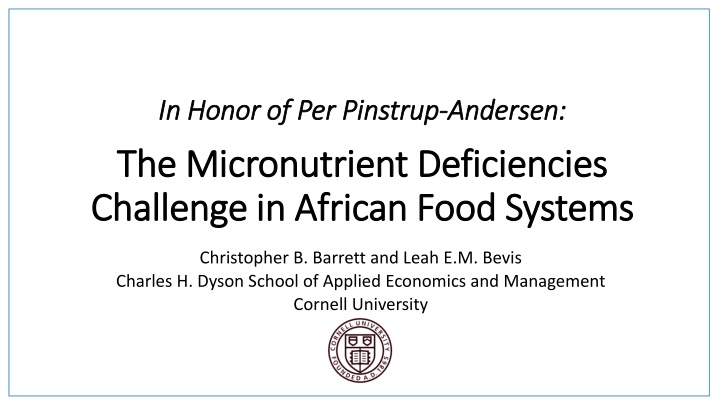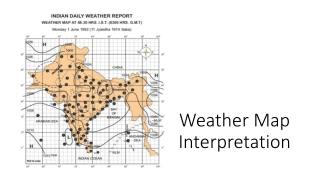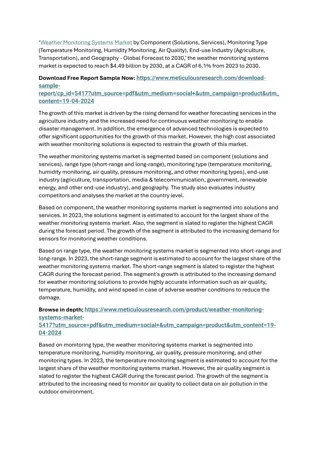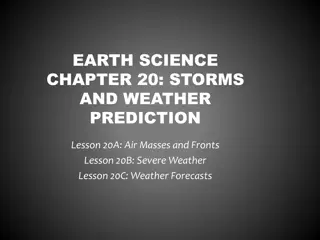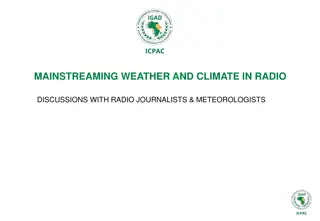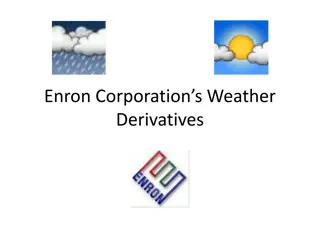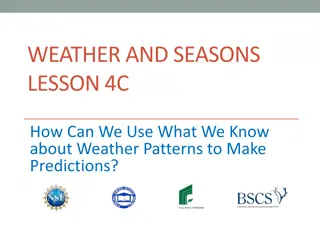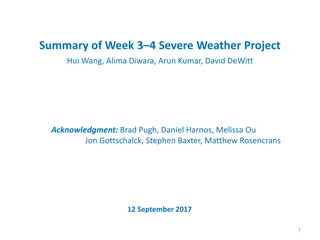Weather Impacts on Trucking Operations
Meteorological seasons, snow, ice, rain, high winds, and major weather culprits affecting the trucking industry are discussed in this informative content. Understanding weather patterns helps in planning, ensuring safety, and minimizing delays. Various weather conditions such as hurricanes, tornadoes, extreme heat, snowstorms, and heavy rains can significantly impact trucking operations, leading to delays, road closures, and safety hazards for drivers. Safety measures, emergency preparedness, and awareness of weather-related challenges are vital for effective logistics management and successful transportation operations.
Download Presentation

Please find below an Image/Link to download the presentation.
The content on the website is provided AS IS for your information and personal use only. It may not be sold, licensed, or shared on other websites without obtaining consent from the author.If you encounter any issues during the download, it is possible that the publisher has removed the file from their server.
You are allowed to download the files provided on this website for personal or commercial use, subject to the condition that they are used lawfully. All files are the property of their respective owners.
The content on the website is provided AS IS for your information and personal use only. It may not be sold, licensed, or shared on other websites without obtaining consent from the author.
E N D
Presentation Transcript
In Honor of Per In Honor of Per Pinstrup The The Micronutrient Deficiencies Micronutrient Deficiencies Challenge in African Food Systems Challenge in African Food Systems Pinstrup- -Andersen: Andersen: Christopher B. Barrett and Leah E.M. Bevis Charles H. Dyson School of Applied Economics and Management Cornell University
Two of Two of Per s Per s (many) major contributions (many) major contributions 1. A holistic focus on food systems and systems-based approaches to policy analysis and design 2. Calling high-level policy and research attention to the triple burden of malnutrition, including often-overlooked micronutrient deficiencies
Persistent, severe micronutrient deficiency Persistent, severe micronutrient deficiency 25% of the global population suffers from anemia 1/3 of school age children suffer from iodine deficiency 21% of children under 5 suffer from vit A deficiency 1/3 of the global population suffers from zinc deficiency 80 Log. (Anaemia (Iron/Zinc)) 70 Log. (Vitamin A Deficiency) Prevalence of Indicators Log. (Inadequate Zinc) 60 Log. (Goiter (Iodine)) 50 Log. (Stunting) 40 Log. (Wasting) 30 20 10 MN deficiencies deeply problematic b/c of irreversible cognitive/physical effects nutritional poverty traps 0 0 5000 10000 15000 20000 25000 30000 35000 GNI per capita (US$)
A foods systems approach A foods systems approach Why do MN deficiencies decline so slowly with increasing income? Answer requires a food systems approach: interlinkages between producers, consumers and market intermediaries Consumers: information problems, nutritional transition, urbanization, prices Food market chains: perishability, food processing, fortification Production: cropping choices, agricultural practices, MN deficiencies in soil, biofortification
Consumer demand patterns Consumer demand patterns Information: mild MN deficiencies rarely manifest in obvious sensory ways Does education / increased information about micronutrients decrease MN deficiency? Rising GNI is associated with a nutritional transition consumption of traditional staples, consumption of refined grains consumption of animal-sourced food intake & bioavailability of zinc and iron Urbanization Increased opportunity cost of women s time leads to > intake of fast food, street food Much of this food relies on refined wheat or rice, fats, oils, salt, sugars
The Food Value Chain (FVC) The Food Value Chain (FVC) Perishability: foods loose vitamins over time, especially at ambient temperatures. Vitamin C & B vitamins are especially unstable. Increased processing of grain often removes bran and germ - including much of the Fe, Zn, Ca, vitamins, phytate, and protein Spinach (Favell 1998 Food Chemistry) Food fortification (e.g. milk, sugar, oils, salt) can increase levels of MNs, but success depends on large processing plants, government oversight, and consumer WTP Miller & Welch 2012 Food Policy, Welch & Graham 1999 Field Crops Research
Producer decisions Producer decisions Micronutrient-deficient soils lead to MN-deficient crops and humans Selenium deficient soils in Malawi cause low selenium intake; can be remedied with selenium-enriched fertilizers (Chilimba 2012 Field Crops Research) Green Revolution technologies increases cereal mono-cropping while decreasing production of iron- and zinc-rich legumes South Asia experienced 200% (400%) increase in rice (wheat) production, a decline in diet iron density and a marked increase in anemic women in the 30 years following the Green Revolution (United Nations ACC SCN 1992) Increased fertilizer use affects micronutrient levels in plants Excessive application of NPK fertilizer decreases vitamin C in horticulture, decreases uptake of zinc and iron in grains (Gao et al. 2011 Field Crops Research, Panda et al. 2012 Comm Soil Sci Plant Anal, Harris & Karmas 1975)
Producer decisions Producer decisions Biofortification targets poor, agrarian populations. Success depends on adoption, marketability, & longevity of MN density. ( HarvestPlus Crop Strategies Brochure 2013
Looking forward Looking forward The stubborn persistent of micronutrient deficiencies clearly arises at multiple levels of food systems. Forward-looking policy research and action must: - identify where MN deficiencies are severe and widespread - determine the root sources of those deficiencies for distinct groups - evaluate the cost-effectiveness of options comparatively, across the food system - develop useful rules of thumb for targeting interventions to those groups
Thank you, Per (and all) Thank you, Per (and all)
